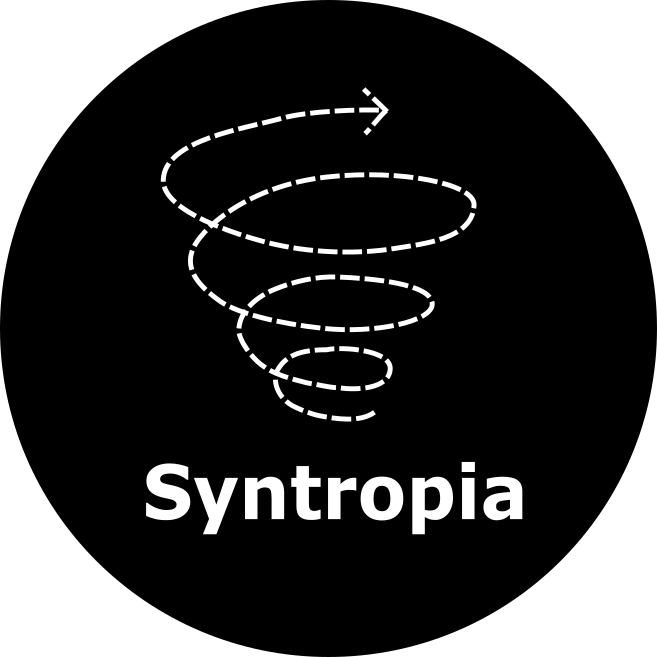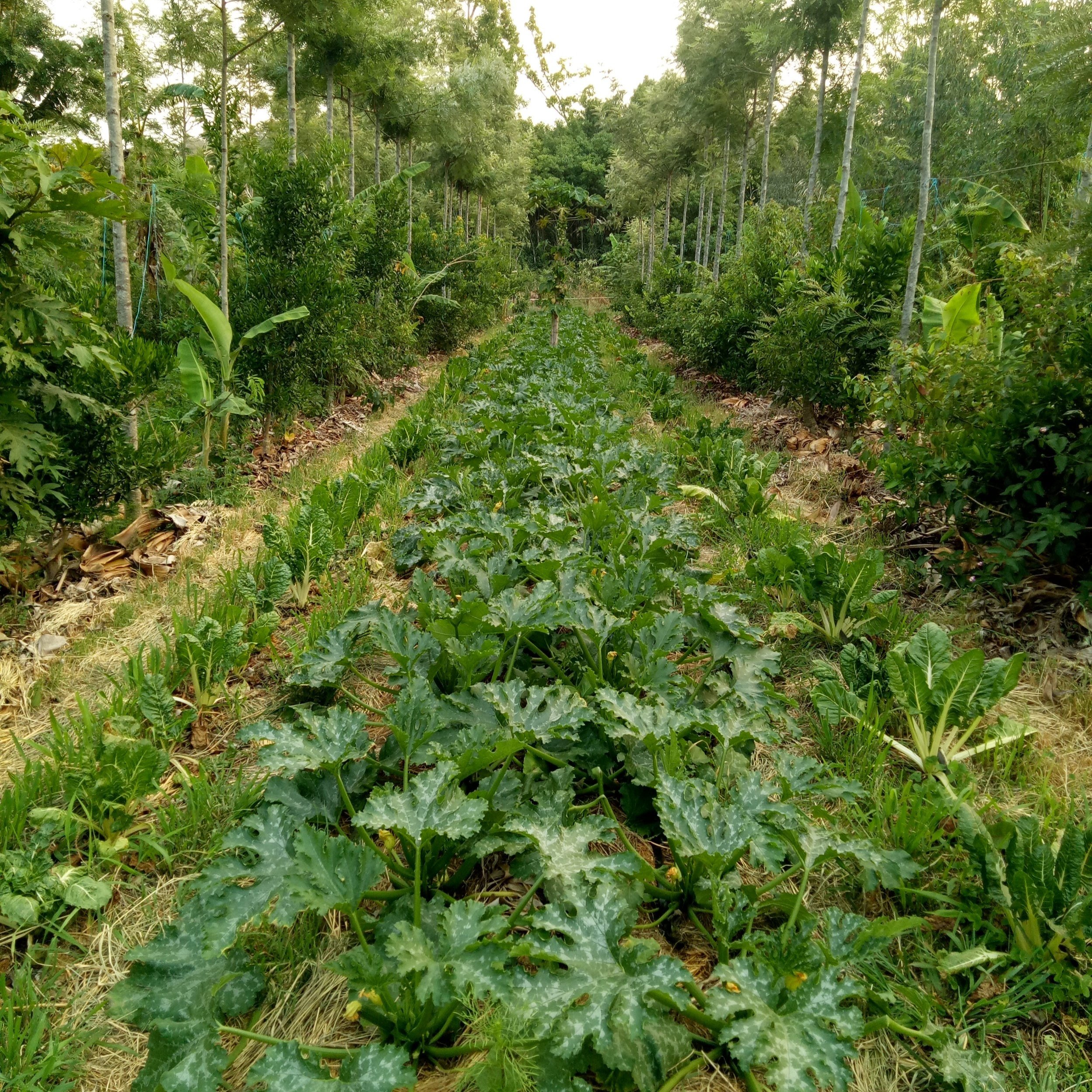PAYMENT PLAN AVAILABLE, SEE BELOW
Direct Path to Advanced Syntropic Agroforestry
I am very happy to announce that I have been invited to Brazil by Ernst Gotsch and Fernando from CEPEAS to discuss further collaboration with education and the future development of Syntropic Farming in Australia. We have now come a long way and collaboration and consolidation is planned to raise the level of, and access to
Syntropy
Learn how to apply Syntropy on any scale, in any context, at a low cost - I’ll show you how!
Direct Path to Advanced Syntropy
Syntropia Farm
October 26 & 27, November 2 &3
Early Bird - $647.00
Standard - $698.00
EACH COURSE IS STRICTLY LIMITED TO 20 PARTICIPANTS!
For Payment Plan, Please See Bottom of Page
Whether you are serious about farming, looking at a professional role in syntropy or want to take your home agroforestry to a new level and save time, money and labour - this course is for you.
Advanced agroforestry is lacking, we seem to be stuck in first gear after the first introductory type courses went around the world like a wild fire. There is no need to shovel mulch, pull weeds as a chore and spend money and time on inputs.
Advanced agroforestry techniques are not uncommon, but access to them is limited.
After a few conversations with CEPEAS (Fernando, Ernst, and a visit to Brazil planned to further align and consolidate), plus the fast track and time saved in The Syntropic Workshop, a fast and efficient way to move you straight into the best outcomes of Syntropic Farming has been developed.
In the end, you will find that advanced Syntropy is actually quite simple once you understand the essentials.
What has made this possible is The Syntropic Workshop, the online platform where the essential theory learned in the introductory type courses is taught, this means that you don’t need to sit around for 2 days learning the theory (which can move a bit too fast) on a physical site, where instead, you can learn the theory online, at a low cost, for as long as you need, then to come to the physical workshop and hit the ground running - going straight into the applied methodology.
To qualify for this course you must first do the “Principals of Syntropic Agriculture” online course at The Syntropic Workshop.
This membership is low cost, gives you enough time to study before hand, catch up and clarify any questions after the course, plus enjoy all of the other benefits of being a member.
The Excellent work of Reveille Saw in tough conditions in West Papua. Reville is a student of The Syntropic workshop, he has gone on to very advanced applications of Syntropy
This is the first time I have opened up my farm for teaching, it is really important to understand the principals before you visit my farm so you can understand how I apply syntropy in the way I, and other leading experts do this.
Do you get caught up in the process of design? Let me tell you this is a waste of your time - the systems NEVER work out how you think they will on a spreadsheet or a piece of paper, instead, you will learn planting patterns, which allow for every variable and you always have the best option at hand at every moment to continually steer the macro organism to provide the best for you desired outcomes. It is important to remember that Syntropy is 5% planting and 95% management, a correct planting approach will see you having the best possible options at any time to manage the macro organism, to have the best arrangement of strata, lifecycle, and most importantly - successional order and function.
This is a 2 day Workshop which will see you learning how to push past the point of general stagnation that is occurring with syntropy - there are now countless examples of the first phase introductory demonstration plantings which are designed to teach us the principles. What lacks is where we are supposed to take this vs repeating the standard planting patterns which now abound.
There is nothing wrong with this, it gives us a good reference for the principles of syntropy, but we are now in a situation where the time to take this further and unleash the power of syntropy is overdue.
Planting water is real - exceptional results in Australia in the record drought of 2019
Workshop Details
Maudsland, Gold Coast Queensland. Specific location and transport information will be supplied after booking
Day 1
We see, we then understand
8 am start, Quick welcome and introduction followed by inspection and detailed explanation of farm processes, fluid application of Syntropy, economics - both financial and energy.
During the inspection, all examples of function will be related to your context through questions from you, also questions prompted by me towards you. We aim to achieve clarity and understanding by doing this.
After our linch break, around 1:00 pm, we will sit down for the rest of the afternoon and revise the principles of Syntropic Farming, this is to clarify our understanding and field questions.
We will wind up 3:00 pm.
Day 2
We do, we then know
8 am start, we begin planting and managing, this takes the full day. We take as long as we need to understand what and how - there is no pressure at all to get a certain amount of work done, it is about you and you being comfortable that you know and fully understand what function we will achieve with the action we undertake. There will be time for questions, chat and some laughs. The day will finish around 3 pm.
To conclude: as a member of The Syntropic Workshop, there will be ample opportunity for support and clarification as questions and further considerations arise after you have left the site - the course doesn’t end there.
Please click on the product below for additional info
This course will be of great use to those who are on a journey to building a career in regenerative agriculture, in this course you will see how Syntropic Farming is utilised in primary production. You will learn the skills to develop highly productive systems and make real change in how agriculture looks in our future.
VIEW SHOPPING CART AT TOP OF PAGE
VIEW SHOPPING CART AT TOP OF PAGE
-
Syntropic Farming is a complimentary form of regenerative farming, it is another layer in providing fertility and yield in any regenerative initiative - it does not displace or compete with any existing or planned production methods, quite the opposite, join me to find out how versatile and powerful this is.
The regenerative methodology of tree management and how this affects the surroundings is examined, Syntropic Farming is a very specific and precise form of agriculture, it could be seen as the woodland analog of Holistically managed grazing, where the dynamics of species succession are laid out in a management framework.
-
There is a very big difference between trees planted and trees planted and managed in a syntropic framework, and this requires a paradigm shift in looking holistically at the macro-organism of the farm, and using species succession, and specific ongoing and timely management to produce incredible results.
-
Species succession is a natural process where a sequence of different plant species replace each other over time in a particular area. In syntropic farming, species succession is intentionally managed to create a dynamic and diverse agroforestry system that maximises ecosystem services and productivity.
Syntropic farming is a regenerative farming practice that involves planting different layers of trees and plants in a structured and intentional way. The process of species succession is central to this practice, as each species performs specific functions at different stages of succession to create a balanced and productive ecosystem.
The first stage of succession in syntropic farming involves planting pioneer species, which are fast-growing plants that create a canopy to shade out weeds and retain moisture in the soil. As these plants grow, they begin to create a favourable environment for a new set of species to thrive.
The next stage involves the introduction of intermediate species, which have different functions such as fixing nitrogen, providing food for pollinators, and stabilising soil. These plants are carefully chosen to complement the existing species and maximise the diversity and productivity of the system.
The final stage of succession involves the introduction of climax target species, which are long-lived, slow-growing trees that create a stable and productive ecosystem. These trees provide shade, food, and habitat for a range of wildlife and are essential for the long-term health and resilience of the system.
Through careful management of species succession, syntropic farmers can create a highly productive, diverse, and resilient agroforestry system that mimics the structure and function of natural ecosystems. This approach not only increases food production but also promotes soil health, biodiversity, and carbon sequestration, making it an essential tool for sustainable agriculture.






